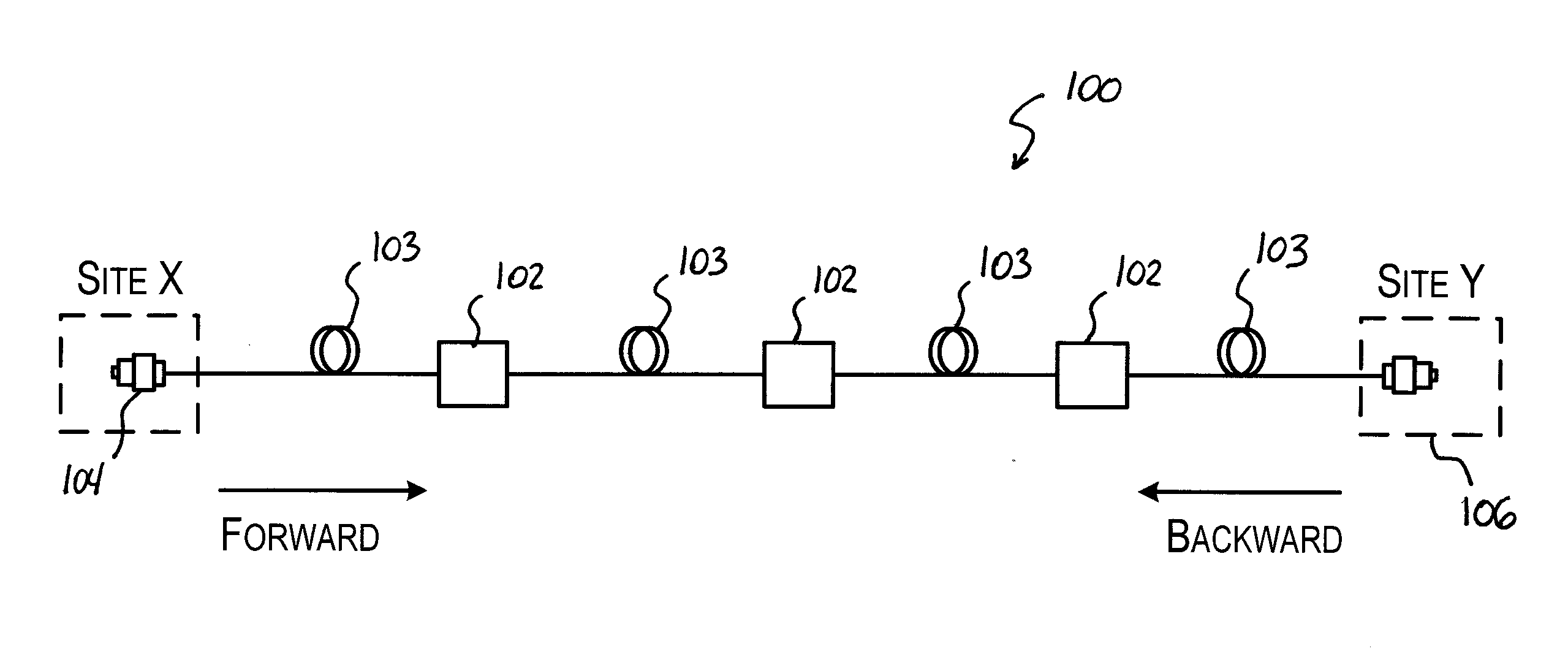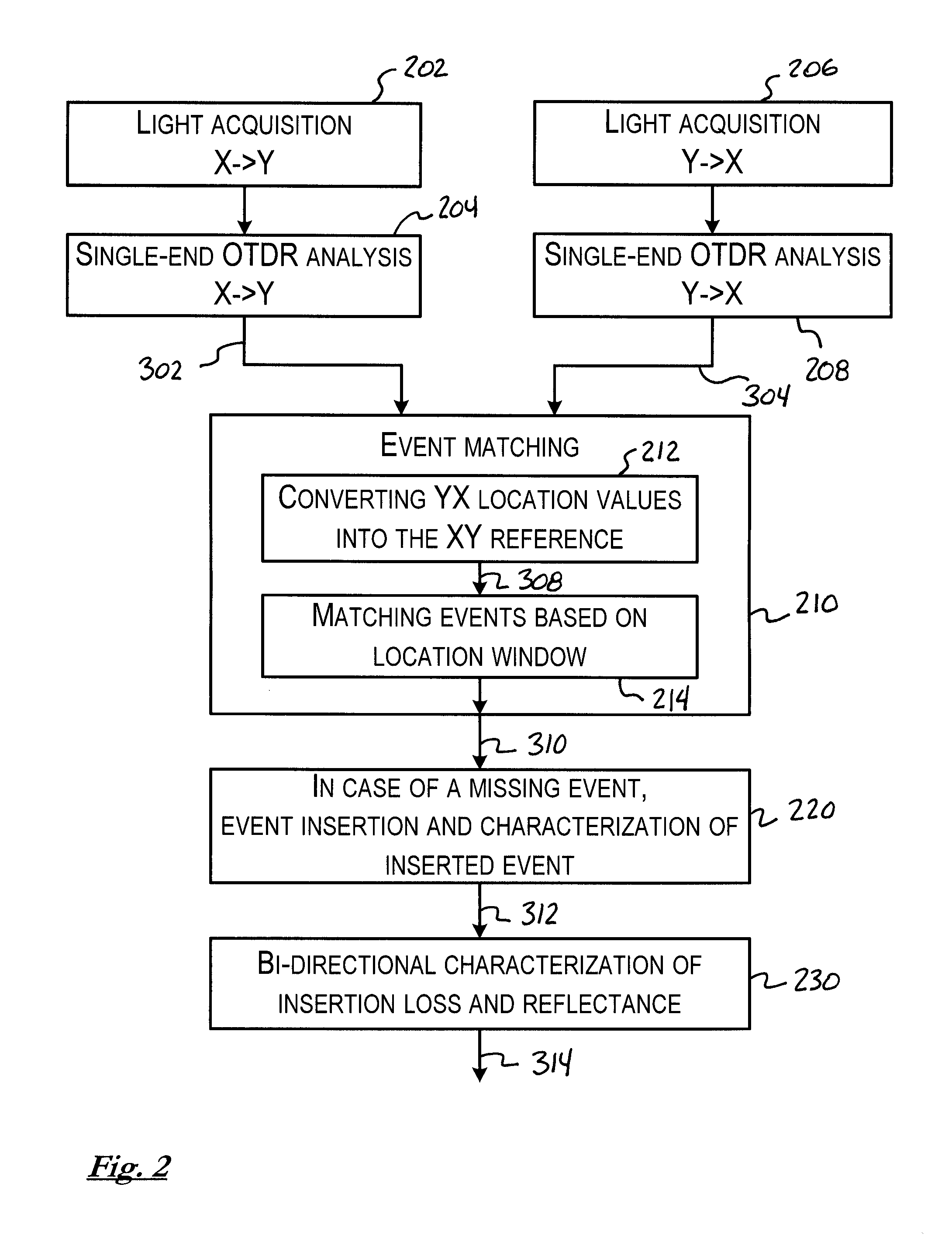Bi-directional multi-pulsewidth optical time-domain reflectometer
a reflectometer and time-domain technology, applied in the field of optical reflectometric methods and systems, can solve the problems of characterization of splice loss, limited ability to characterize short fiber sections, and closely spaced events, and all the above-mentioned multiple-pulsewidth approaches are limited to single-ended measurements, so as to improve the resolution of events.
- Summary
- Abstract
- Description
- Claims
- Application Information
AI Technical Summary
Benefits of technology
Problems solved by technology
Method used
Image
Examples
Embodiment Construction
[0047]Referring to FIG. 1, there are provided bi-directional multi-pulsewidth Optical Time-Domain Reflectometric (OTDR) methods and systems for characterizing an optical fiber link 100 between physical sites X and Y using a bi-directional OTDR analysis.
[0048]OTDR is a diagnostic technique for optical fiber networks where a light pulse is launched in an optical fiber link and the returning light, arising from backscattering and reflections along the fiber link, is detected and analyzed. Various events 102 along the fiber link 100, which delimit optical fiber segments 103, can be detected and characterized through a proper analysis of the returning light in the time domain. In order to perform a bi-directional characterization, single-end OTDR measurements should be made from both forward and backward directions on the fiber link 100. To perform the forward-direction characterization, an OTDR system (not shown) is connected to the first end 104 of the fiber link 100 (located at site X...
PUM
 Login to View More
Login to View More Abstract
Description
Claims
Application Information
 Login to View More
Login to View More - R&D
- Intellectual Property
- Life Sciences
- Materials
- Tech Scout
- Unparalleled Data Quality
- Higher Quality Content
- 60% Fewer Hallucinations
Browse by: Latest US Patents, China's latest patents, Technical Efficacy Thesaurus, Application Domain, Technology Topic, Popular Technical Reports.
© 2025 PatSnap. All rights reserved.Legal|Privacy policy|Modern Slavery Act Transparency Statement|Sitemap|About US| Contact US: help@patsnap.com



